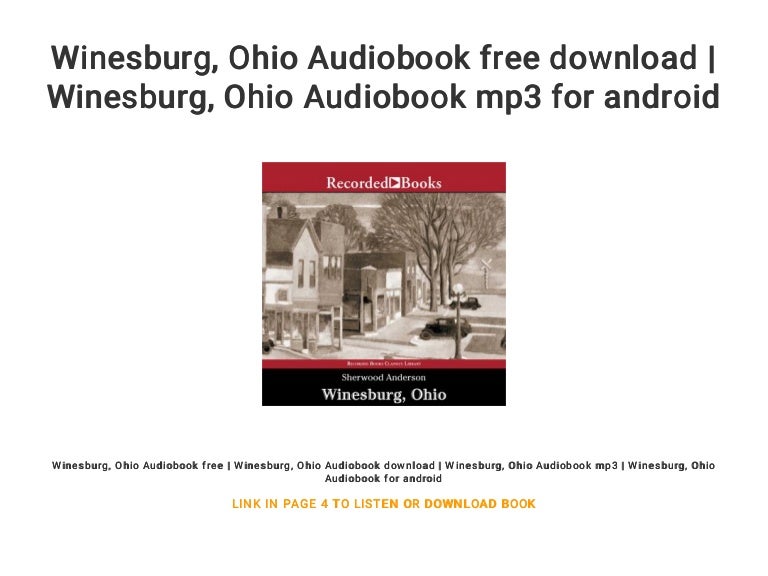
I will treat Winesburg as a novel, primarily because of its common locale, and George Willard, despite the fact that the book features neither the sustained plot nor action characteristic of novels. Winesburg, Ohio consists of a series of tales, united by a common place and by the character of George Willard, Anderson’s personal representative in the novel. Indeed, Anderson’s primary importance may be the indirect influence he exerted on writers of the 1920s and 1930s. But it gave Sherwood Anderson access to the some of the rising writers of the 1920s, including both Hemingway and Faulkner. So the sex, or at least the depiction of characters thinking about it in Winesburg, helped create the impression of a “cutting edge” book, a book that dared to break taboos.īesides the mixed, but sometimes extravagant critical reception, commercial success eluded Winesburg, Ohio. In 1919, the year of Winesburg‘s publication, even Theodore Dreiser was considered shocking. Like many books with a tincture of scandal, Winesburg‘s risqué reputation no doubt aided its critical reception. Naturally, their thoughts often tend toward sex, or at least romance, but in a way that appears quaint today.


Nearly all of the older characters nurture old wounds, and the young, fresh ones. I can understand why Winesburg, Ohio was shocking for its time: the veneer of Victorian innocence in small town American life is pierced, revealing tormented psyches even among seemingly ordinary people. Review By Dan Geddes Winesburg’s Reception


 0 kommentar(er)
0 kommentar(er)
